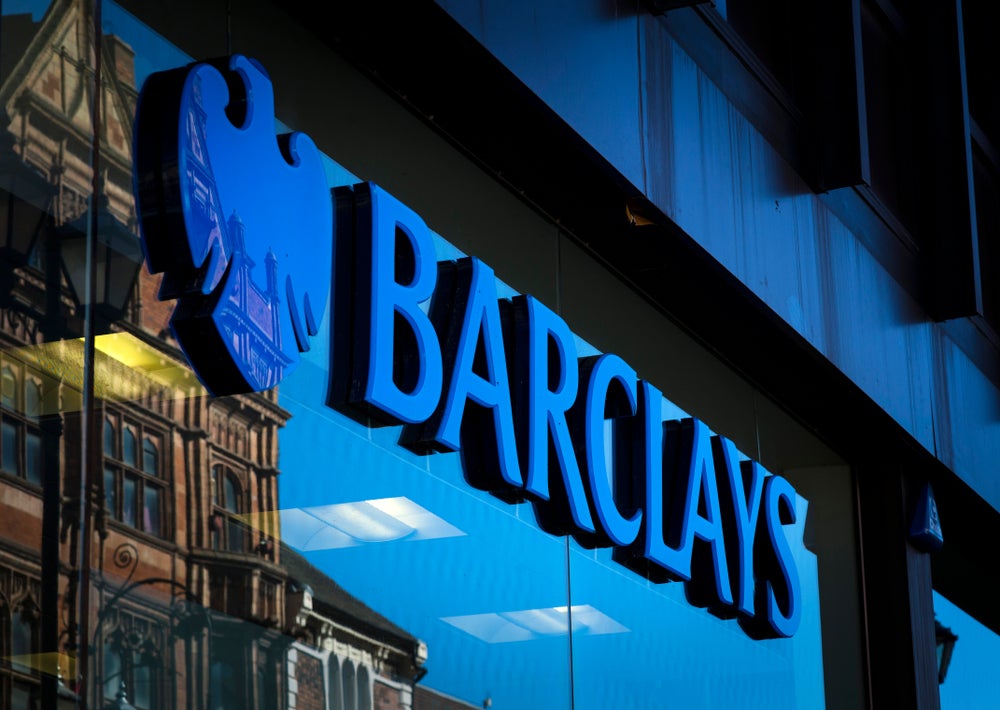With the year all but over RBI has asked the industry’s experts to share their predictions for 2014. With many espousing channel digitalisation in 2014 the move towards mobile looks like it will more even more into the mainstream with branches seeming to be ever more a thing of the past
Michael Nuciforo, consultant
When I look into my crystal ball for next year I think it will be remembered for three things.
1. Hail King Mobile!
At some point next year, mobile banking will become not only the most used channel but the most important to customers. This inevitable shift will kick off a series of significant changes to the banking ecosystem. More agile delivery processes will be applied, multi-device design will be expected and an increasing focus on securing and retaining mobile expertise will be demanded.
2. Mini-branches
Industry analysts have been forecasting the demise of branches for many years. Whilst it’s still a little too early for a significant decline in branch numbers, from next year we should start seeing a downsizing in actual branch size. Look for mini-branches to start popping up in train stations and airports across the country as banks start to sow the seeds of change.
3. If this happens, then do that…
People don’t want to bank. They only do it because they have to. At present a bank only acts on the commands of a customer. Proactive banking is about turning the current reactive banking model on its head. It’s about doing the banking on behalf of the customer through a set of agreed parameters. With banks able to use push notifications to send and receive communications from customers instantly, they have the mechanism. Download the IFTTT app for a sneak peak of the future.
How well do you really know your competitors?
Access the most comprehensive Company Profiles on the market, powered by GlobalData. Save hours of research. Gain competitive edge.

Thank you!
Your download email will arrive shortly
Not ready to buy yet? Download a free sample
We are confident about the unique quality of our Company Profiles. However, we want you to make the most beneficial decision for your business, so we offer a free sample that you can download by submitting the below form
By GlobalDataDean Young, vice president, product management, SunGard’s retail banking business
Branch digitalisation will gain momentum in Asia – slower to embrace digitalisation than other regions, Asia’s retail banks will increasingly look to re-invent their branch infrastructures using new technologies to breathe life back into this traditional channel. Our recent research into consumer banking trends highlights the significance of this channel, with 97% of consumers surveyed in South East Asia confirming they regularly visit the branch but the research also revealed that consumers felt the branch was a key improvement area that banks needed to focus on. This type of demand will continue to drive a focus on digitalising the branch to drive an improved, consistent experience across all channels. Mobility of branch staff will form an important part of branch transformation strategies as service personalization will increasingly become front of mind for banks in the region; our research also showed that service personalization was one of the top three areas that consumers want their banks to improve on.
The turbulent regulatory landscape will impact branch models – regulations such as FATCA and KYC will slow down the move for banks to digitally onboard clients; this will drive an increased focus on building a robust onboarding infrastructure in the branch.
Risk management will drive a modular approach to legacy transformation – while new market players and smaller institutions like microfinance organisations can operate on packaged core banking platforms, mid-large tier retail banks will progressively renovate the operational core to avoid the risk, cost and operational challenges that a large scale rip and replace presents. Modular core replacement will gain main traction as it offers a more manageable approach to operational renovation. Regulation and risk priorities for retail banks will drive demand for modules that enable firms to generate real-time exposure on collateral to be able to identify, manage and react to market events more rapidly.
David Webber, managing director, Intelligent Environments
2014 will be a year of change for financial services. Nine in ten UK current accounts will gain access to mobile payments services, according to the UK Payments Council, while emerging innovations such as the world’s first smartwatch bank will fundamentally change the way we manage our finances. David Webber, CEO of Intelligent Environments, looks at the key trends that are set to change the digital banking landscape in 2014.
Payments
The first trend is the mainstream adoption of mobile payments. Through the new Payments Council’s new mobile payments service, consumers will be able to make secure payments directly to one another simply by knowing the recipient’s mobile phone number. As the entire process will be authenticated through mobile device security systems, customers won’t even need to enter a sort code or account number to make a payment.
And it’s not just transferring money between accounts. Emerging technologies such as Zapp from VocaLink, will give Brits the ability to make real-time payments to businesses, direct from their bank account through their handsets.
These initiatives will drive the next major iteration of the ever evolving mobile payments market. By coupling the unique assets of access to the Faster Payments network, with the use of established mobile banking login and trust models, banks will be able to defend against a range of innovative disruptors in the payments market.
Wearable technology
With Google Glass on general sale early next year, an array of smartwatch launches planned and curved displays offering the potential for innovative product development, it is no wonder that 2014 is already being dubbed the year of wearables.
This is why we’ve developed the world’s first smartwatch banking app for the Pebble watch, which can display your finances at the glance of a wrist. Financial institutions are keen to capitalise on the growing consumer appetite to bank on the move, so we have developed the app which makes it easier for consumers to connect with their money. Not only does it enable users to view their live bank balance and recent transactions, but it also vibrates when the user approaches their overdraft limit. We’re already having discussions with several banks about rolling out the technology to their customers, so see this being a real growth area next year as more smartwatches and wearable devices enter the market.
Security
As mobile banking rises in popularity, progressive security is also likely to be high on the agenda in 2014. Digital banking apps will introduce an opt-in function to display your balance and five recent transactions without needing to log in. With biometric authentication such as the iPhone 5S fingerprint scanner enabling customers to log into their smartphones, we are likely to see an array of new options that, as customers tire of having to remember passwords and use a PINsentry just to check their balance, will improve customer experience whilst also making life harder for fraudsters.
Personalisation
Finally, we can also look forward to greater personalisation in 2014. As the European Union cuts card transaction fees, rendering reward schemes unviable, we will see an increase in collaboration between financial services organisations and retailers. This will create a wealth of spend data which can then be used to target customers more effectively with personalised offers, which according to Gartner, can be broken down into four elements: "see me, sync me, know me and be me". We’ve taken these elements and interpreted it for financial services.
"See me" refers to retailers and financial services organisations collaborating to send personalised location-aware push notifications to customers. For example, if you’ve got the American Express card and app installed on your iPhone, it’ll alert you to an in-store double cashback offer which is available as you walk past the shop.
"Sync me" means a customer’s financial information will be securely synced across all their devices, while "know me" will see big data used to predict which products or services customers want before they’ve even thought about it.
The final pillar, "be me" will involve customers allowing banks to manage their money for them. For example, your bank will look at your regular commitments and give you a prediction as to how much money you have left to spend until pay day.
From checking your bank balance with a glance of the wrist, to paying for your weekly shop using your smartphone, I have no doubt that 2014 is going to be an exciting year for digital banking and payments. There’s a huge opportunity at stake for financial services institutions to innovate and deepen relationships with their customers, so I look forward to helping financial institutions capitalise on the new era of wearable banking, biometric security and personalisation in 2014.
Patrick Reemts, director credit risk solutions, ID Analytics
Big data was a recurring theme within financial institutions in 2013, but when it comes to credit risk, most of the big data discussion focused on internal data and relationships banks have with consumers. At ID Analytics, we see this big data conversation progressively changing in 2014. Financial institutions will begin to look outside their walls to gain a more complete picture of individual consumer behavior to judge creditworthiness.
More data than ever is available to financial institutions on individual people, they just need to know how to take advantage of it. Today many banks are mining their internal big data systems for information about consumer interactions with the bank. For example, banks know how often a customer uses mobile banking channels versus retail banking centers, and financial institutions can use voice analytics to determine the emotional state of a customer when they call into customer service. But these factors show only one dimension of behavior on whether a customer will be late on a mortgage, auto or credit card payment.
Data available from external sources can determine if a customer is on time with other payments such as their wireless or utility bills, some even in real-time. These indicators give the bank a better understanding of the customer’s behavior with all of their financial relationships, and ultimately, a wider picture of how they may behave in the future.
In 2014, banks must look for new sources to gain better insight into consumer behavior. Data from outside sources, such as transaction data from other types of accounts, payday and subprime lending, alternative billing methods, and checking accounts, will ultimately paint the full picture of repayment patterns.
By utilizing these methods the bank can not only protect itself against uncertain credit risk, but provide better customer service to targeted at-risk consumers. By offering specific loans, specialized relief programs, and starter products, at-risk consumers will be given the opportunity to learn debt management and build credit in a safe environment. This will allow financial institutions to forge lasting relationships with the right consumers.
In 2014 it will not be about big data, using more data, or deep mining; it will be about looking for meaningful data. Combining additional financial relationships outside of traditional loans with the information banks already know about their customers will provide a more in-depth and customized view of credit behavior and lead to a stronger and safer business.
Daniel Melo, Senior Director, Consulting, at FICO
While Ovum has recognised that revenue growth will have an increased focus in 2014, the impact of regulation and fraudulent activity will still need to be a key consideration for retail banks. Banks are also focused on the customer experience, which will drive investments in both mobile solutions and fraud management systems. As lending continues to pick up in markets recovering from the recession, so will fraud.
FICO and Efma have just surveyed risk managers across Europe on their priorities for 2014. This report will be published in January 2014, but here is an early look. As shown, the top areas for banks are improving risk management processes and systems (96% of respondents name it a priority or top priority), improving the customer experience (96%, with 58% calling it a top priority) and growing the profitability of existing customers (93%).
With that in mind, here are some of the areas we see getting greater attention next year.
Fraud Management Technology Advances
Lenders will increase their adoption of new technologies such as proximity location services, which compare the physical location of a cardholder’s registered mobile phone against the location of the ATM or point-of-sale terminal.
Banks will also rethink their contact strategies, increasingly using mobile devices to confirm whether fraud is occurring. Our data has shown that response rates after working hours (between 8pm and 8am) to SMS alerts for fraudulent activity were higher at 66% than between business hours (50%). This shows that interactive texts for simple transaction verification have become effective and acceptable to most consumers. We predict that banks will take notice of these trends and look to increasingly incorporate after-hours contact strategies.
Conduct Risk
Restoring the trust of consumers and regulators is critical for retail banks as we move into 2014, and this will need to be achieved through a systematic approach to conduct risk. Leading banks will begin to adopt an analytics-based system to ensure an efficiently run organisation with clearer, deeper insight into policies and processes that will safeguard them against any potential customer or industry damaging misconduct. It will not only be the regulators that will demand greater responsibility from the financial institutions but consumers as well, who will want to ensure the banks they have entrusted their financial stability to are not culpable for their treatment of customers.
Mobile Customer Experience
Our recent research has shown UK customers have been slow to adopt mobile communications with their banks – with only 17% considered ‘Mobile Natives’. These were defined as people who interact with businesses via mobile devices every day. Of the 14 countries surveyed, the UK ranked fourth lowest, well behind countries such as China, Korea and India. In better news for the UK, however, it leads the West for interest in mobile services, with 41% of UK respondents stating they found the idea of receiving alerts on their mobile for overdue bills via a payment alert app attractive – compared to only 27% of French respondents. With ever-growing proliferation of smart devices, we see the number of mobile natives as likely to increase over time as we move through 2014.
Profitable Pockets
Banks will continue their search for ways to identify which customer pockets have the potential to be more profitable, and will target these customers extensively to drive growth. But simply finding more customers isn’t enough — banks need to strike the vital balance of increasing profitability needs while creating an excellent customer experience and maintaining financial sustainability.
Cloud-Based Cost Control
Banks will continue to aggressively focus on reducing costs. As they seek to improve their risk management processes and systems, more bankers will turn to the cloud. There are data protection concerns to address, but the possibility of escaping the heavy cost burden of legacy systems with a cheaper infrastructure that drives higher performance will provide the incentive to solve these challenges.
Chris Dunne, Payment Services Director – VocaLink
The dominant themes of 2014 will be uncertainty, mobility and risk.
Following the passage of the Banking Reform Bill through parliament this year, it will become law in early 2014 and it heralds a fundamental change in the way that retail banking is conducted. For us the biggest change is the creation of the Payment Systems Regulator, under the auspices of the FCA, that will introduce economic regulation across all payment types. The regulator will have wide-ranging powers and it is expected to focus initially on opening up access to payment systems, researching the case for account number portability and also examining the ownership structure of the payment systems.
However it won’t be fully formed until the very end of next year or the start of 2015 and so we are now entering a period of uncertainty, which is compounded by the recent legislative package from the European Commission: the proposed update to the Payment Services Directive and the proposed interchange regulation. These will be the subject of intense lobbying and discussion throughout next year. The original Payment Services Directive had over five hundred amendments before it became law and the proposed update will probably go on a similar journey.
Mobility is the second big theme – mobility of customers as retail banks work hard to attract current account holders, with substantial advertising campaigns in the first few months of the year as banks seek to capitalise on customers’ New Year resolutions to sort out their finances, with the new Current Account Switching Service taking away the hassle and worry of moving accounts. We will also see increased mobility of payments with the launch in Spring of the Payment Council’s new mobile payment service; this will enable secure payments to be made directly to or from an account without the need to disclose the sort code and account number, by simply using a mobile phone number as a proxy.
Risk will be the third and possibly biggest theme. Cyber-security is becoming the number one risk factor in retail banking and we expect to see far greater scrutiny of system security and substantial investment in threat prevention and detection as a result. Threats from external actors have always been present but the rise of highly organised, potentially state-sponsored activity allied with increased processing capability means that the threat has never been greater.
There will also be increased focus on the risk of major technical failure in core retail banking systems. These systems operate at massive volume with high reliability, but failures do happen and the focus next year should be on mitigating the impact of failures to the customer on the street and also to ensuring that systems can quickly and effectively recover from outages.
So we are entering another busy year, with a healthy mix of opportunities and challenges and we expect to see the industry emerge more robust and more competitive than ever before.
Martin Ruda, managing director, The TALL Group of Companies
As the green shoots are at least threatening to emerge, recovering economies are ultra-sensitive to their banks’ conduct. 2013 saw challenger banks flexing muscles, particularly in the UK where Handelsbanken and Metro are increasingly visible, and RBS and Lloyds are being prepared for significant branch and customer migration. Mobile and digital channels are sparking everywhere, but the most ‘market-relevant’ implementations still show up in emerging markets, not least in Africa.
The New Year promises more of the same, with no let up in regulatory attention, Opportunities, particularly in the core payments and money transmission spaces provide the battle ground for big banks returning to their heritage strengths, and finding that markets, customers and technologies have moved on. Notwithstanding the shifting sands, innovative services and value for money offerings will again win the day, and the newcomers, or established players entering new markets, will find large market share holders difficult to dislodge.
2014 will undoubtedly be the year of the mobile banking application in mature markets, but the world still looks for clues to real success in the mass market implementations which have revolutionized banking in developing economies.








